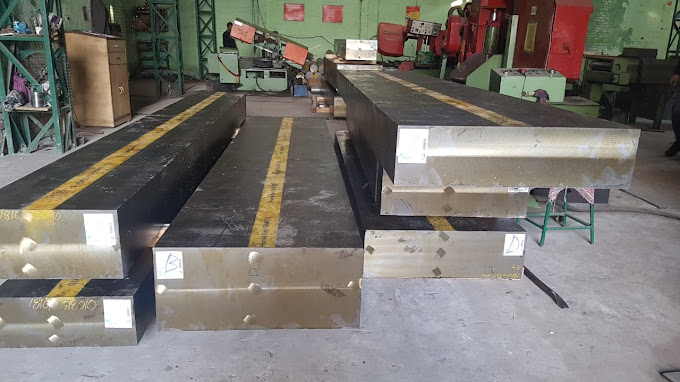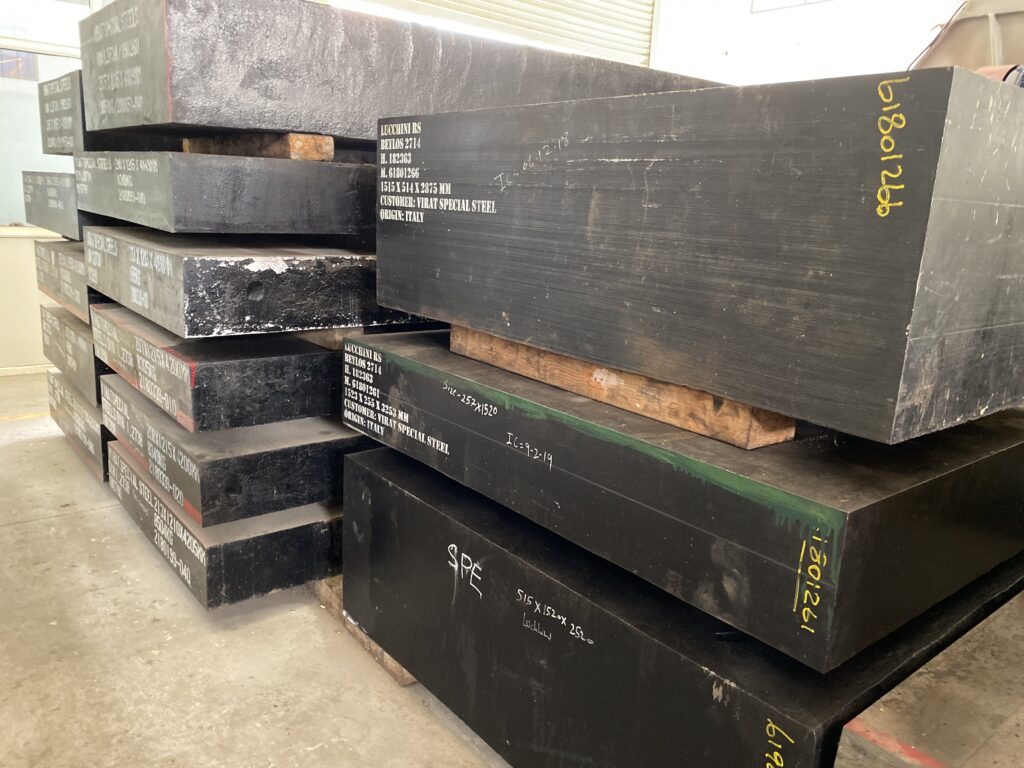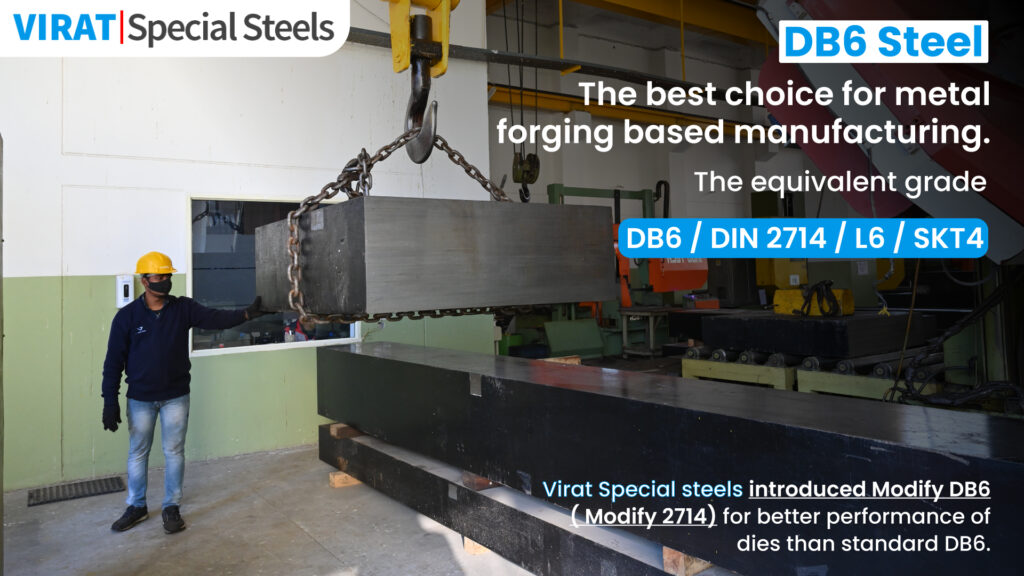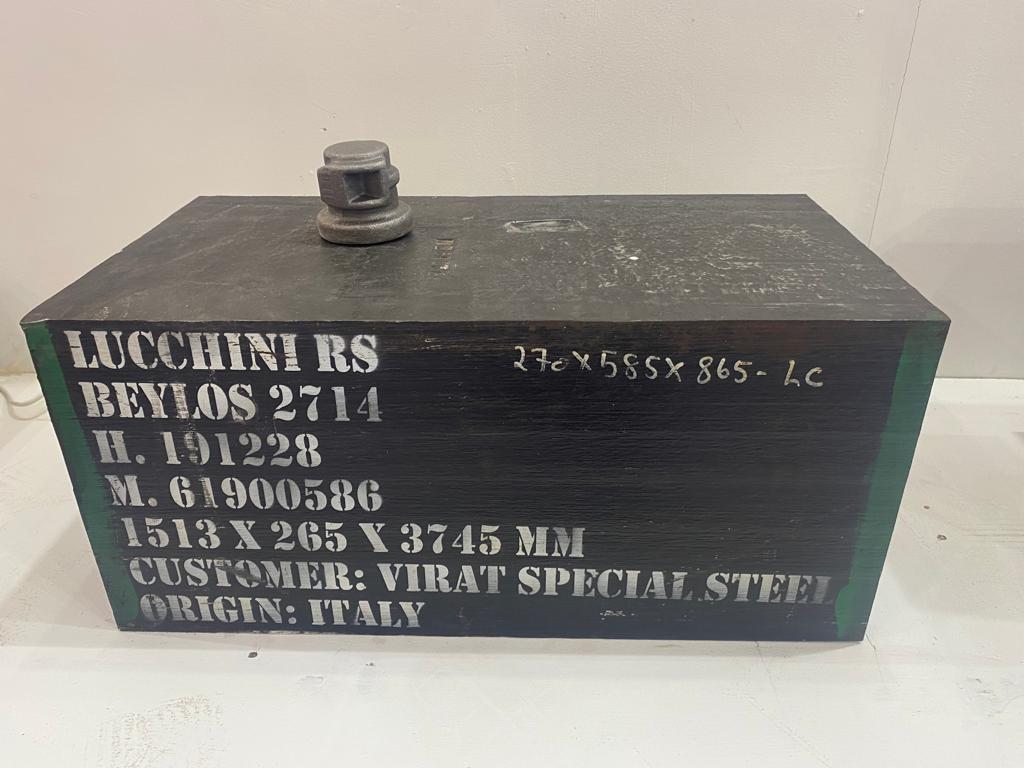Introduction
When it comes to tool steels, DIN 2714 (DB6 Steel) is one of the most reliable choices for hot work applications. Known for its excellent toughness, high heat resistance, and outstanding wear properties, this steel grade is widely used in various industrial applications. But what exactly is DIN 2714 (DB6 Steel) used for? In this article, we’ll explore its key applications across multiple industries and why it stands out as a superior tool steel.
Understanding DIN 2714, DB6 Steel
What is DIN 2714, DB6 Steel?
DIN 2714 (DB6 Steel) is a hot work tool steel that belongs to the H group of steels. It is designed to withstand high temperatures, thermal fatigue, and mechanical stress, making it an excellent choice for forging and die-making applications.
Chemical Composition of DIN 2714, DB6 Steel
The composition of DIN 2714 steel ensures high durability and superior wear resistance. Here’s a breakdown of its key elements:
| Element | Percentage (%) |
| Carbon (C) | 0.50 – 0.60 |
| Chromium (Cr) | 0.50 – 1.00 |
| Molybdenum (Mo) | 0.35 – 0.80 |
| Vanadium (V) | 0.30 – 0.60 |
| Silicon (Si) | 0.10 – 0.40 |
| Manganese (Mn) | 0.60 – 1.00 |
This composition ensures that the steel maintains its toughness and heat resistance, even under extreme working conditions.
Key Applications of DIN 2714, DB6 Steel
1. Forging Dies and Die Blocks
One of the primary uses of DIN 2714 steel is in hot forging die applications. Since this steel grade can withstand high temperatures and repeated thermal cycles, it is ideal for:
- Open die and closed die forging dies
- Die casting molds
- Extrusion die blocks
2. Hot Work Tools and Components
DIN 2714 (DB6) is commonly used in hot work tooling applications, including:
- Hot shear blades – Used for cutting heated materials in industrial processes.
- Punches and hot press tools – Essential for metal stamping and forming applications.
- Rolling mill tools – Used in steel mills where extreme pressure and heat resistance are required.
3. Plastic Molding Dies
This steel is also used in the plastic molding industry due to its excellent wear resistance and thermal stability. It helps in:
- Injection molding dies
- Compression molding dies
Since plastic molding processes involve repeated heating and cooling cycles, DIN 2714 steel’s ability to resist thermal fatigue makes it a popular choice.
Why Choose DIN 2714 (DB6 Steel)?
– High Heat Resistance
DIN 2714 steel can withstand extreme working temperatures without losing its mechanical properties. This makes it perfect for continuous industrial applications where exposure to high heat is inevitable.
– Excellent Toughness and Strength
Due to its high toughness, DB6 steel is resistant to cracking, chipping, and mechanical stress, ensuring longer tool life and durability.
– Superior Wear and Abrasion Resistance
Industries that deal with high wear environments benefit from the abrasion resistance of DIN 2714 steel, ensuring that tools and components last longer.
– Easy Machinability & Repairability
Unlike some high-alloy steels, DIN 2714 (DB6) is relatively easier to machine, making it convenient for manufacturing and repairing worn-out components.
Industries That Rely on DIN 2714, DB6 Steel
1. Automotive Industry
- Used for hot forging dies in manufacturing engine components, gears, and axles.
- Helps in shaping high-strength steel parts used in modern vehicles.
2. Aerospace Industry
- Essential for forging critical aircraft components that require extreme heat and wear resistance.
- Used in die casting molds for precision aerospace parts.
3. Heavy Machinery & Construction Equipment
- Ideal for manufacturing heavy-duty machine parts that undergo extreme working conditions.
- Used in hot shear blades and rolling mill applications in steel processing plants.
Heat Treatment and Hardness of DIN 2714, DB6 Steel
To enhance its properties, DIN 2714 steel undergoes heat treatment processes like:
- Annealing (to refine grain structure and improve machinability)
- Hardening (to increase strength and wear resistance)
- Tempering (to improve toughness and reduce brittleness)
After heat treatment, DB6 steel typically achieves a hardness of 45-52 HRC, depending on the required application.
Conclusion
DIN 2714 (DB6 Steel) is an indispensable tool steel for industries that require high heat resistance, wear resistance, and superior mechanical strength. Whether in forging dies, hot work tools, or aerospace applications, this steel delivers outstanding performance and durability.
At Virat Special Steels, we provide high-quality DIN 2714 (DB6 Steel) solutions tailored for your industrial needs. Contact us today to get the best-grade tool steel for your applications!
FAQs
1. What is the difference between DIN 2714 and H13 tool steel?
DIN 2714 steel offers higher toughness and is preferred for impact-loaded applications, whereas H13 steel has better thermal stability and is widely used in die casting.
2. Is DIN 2714 steel suitable for cold work applications?
No, DIN 2714 is primarily designed for hot work applications due to its high-temperature resistance. For cold work, steels like D2 or O1 are better suited.
3. What is the typical hardness of DIN 2714 steel?
After heat treatment, DIN 2714 steel achieves a hardness of 45-52 HRC, making it suitable for high-wear environments.
4. How can I improve the lifespan of DIN 2714 steel tools?
Proper heat treatment, lubrication, and regular maintenance can significantly improve the lifespan of DIN 2714 steel tools.
5. Where can I buy high-quality DIN 2714, DB6 steel?
You can buy premium quality DIN 2714 (DB6 Steel) from Virat Special Steels, a leading supplier specializing in high-performance tool steels.




